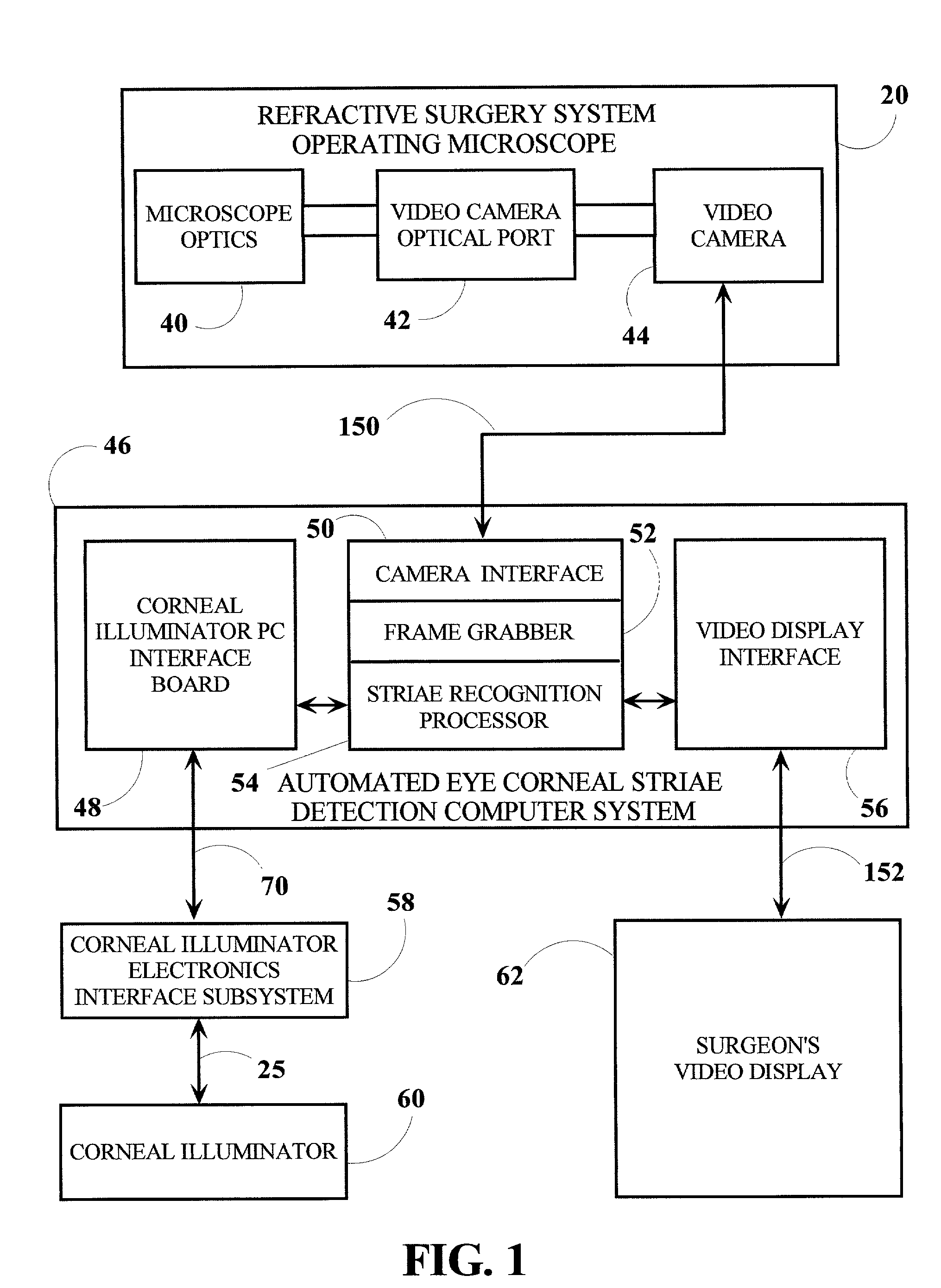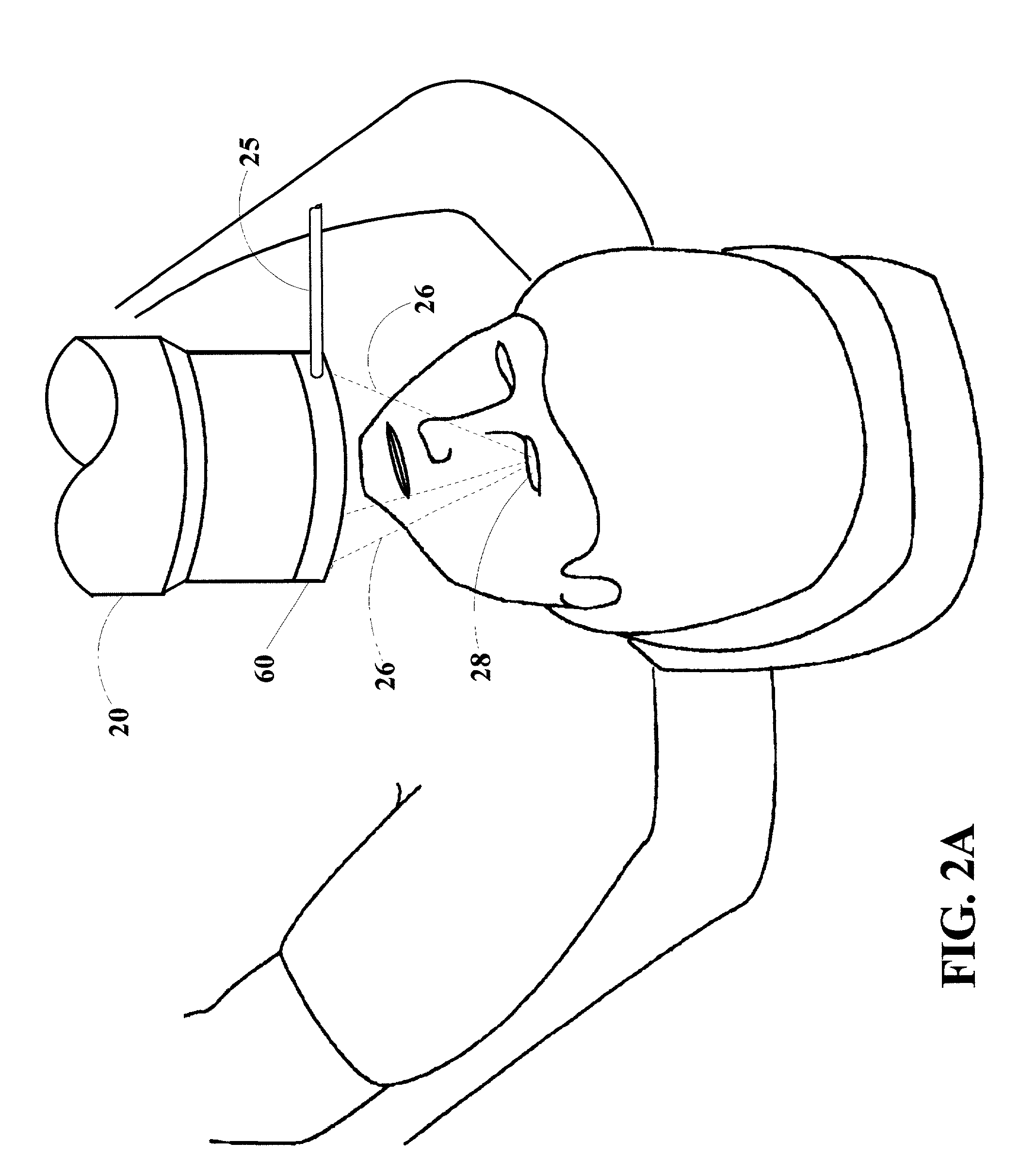System to automatically detect eye corneal striae
a technology of eye corneal striae and automatic detection, which is applied in the field of ophthalmic refractive correction procedures and ophthalmic surgery, can solve the problems of postoperative refractive problems of patients, corneal flap striae, and wrinkles in the corneal flap
- Summary
- Abstract
- Description
- Claims
- Application Information
AI Technical Summary
Benefits of technology
Problems solved by technology
Method used
Image
Examples
Embodiment Construction
[0098] Turning now to FIG. 1, a refractive surgery system operating microscope 20 is coupled to an automated eye corneal striae detection computer system 46 of the invention. Refractive surgery system operating microscope 20 includes a set of microscope optics 40 to allow the surgeon adequate view of the corneal surface and a video camera optical port 42 that optically couples the image the surgeon views to a video camera 44, e.g., a Sony XC-75, that is used to capture the corneal image seen in FIG. 5. An automated eye corneal striae detection computer system 46, e.g., a Compaq Deskpro EN, 450-MHz PC, generally includes a video camera interface 50 which is coupled to the video-out port of video camera 44 through a video camera cable 150, a frame grabber 52, e.g., a National Instruments PCI 1408, a video display interface 56 which is coupled to a surgeon's video display 62 through a video display cable 152, a corneal illuminator PC interface board 48, e.g., a National Instruments PCI...
PUM
 Login to View More
Login to View More Abstract
Description
Claims
Application Information
 Login to View More
Login to View More - R&D
- Intellectual Property
- Life Sciences
- Materials
- Tech Scout
- Unparalleled Data Quality
- Higher Quality Content
- 60% Fewer Hallucinations
Browse by: Latest US Patents, China's latest patents, Technical Efficacy Thesaurus, Application Domain, Technology Topic, Popular Technical Reports.
© 2025 PatSnap. All rights reserved.Legal|Privacy policy|Modern Slavery Act Transparency Statement|Sitemap|About US| Contact US: help@patsnap.com



